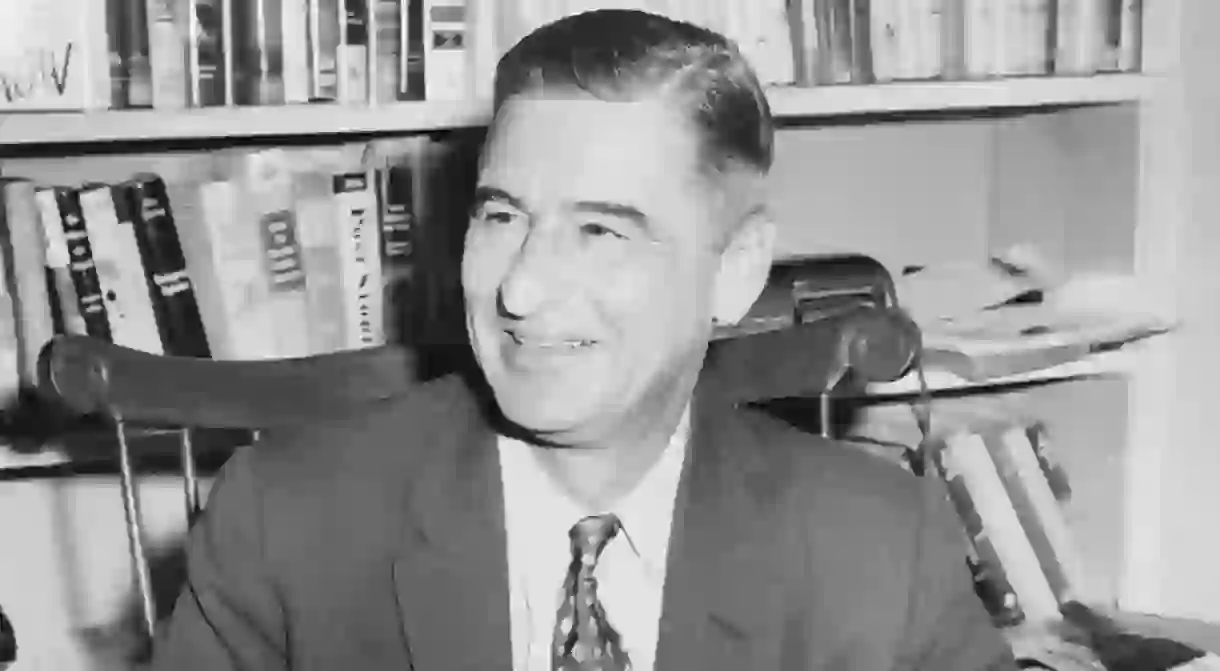The Case for Dr. Seuss as a San Diego Artist

Theodor Geisel, better known by his pseudonym – Dr. Seuss – needs no introduction. With his whimsical art and unforgettable rhymes, he has widely become a household name. His illustrations painted a brighter, more quirky reality and his stories playfully disregarded linguistic norms.
In 1957, when an oversized cat in an equally oversized hat, barged into the home of Sally and Conrad, the world welcomed Geisel’s eccentric perspective with open arms. However, despite his acclaim, Geisel is rarely revered as a San Diego artist the way that Langston Hughes is unquestionably tied to Harlem or William Faulkner to the deep south.
Geisel was born in Springfield, Massachusetts in 1904. After World War II, he moved to San Diego, California and called it home for nearly half a century. He wrote and illustrated some of his most revered works from his home atop Mount Soledad: The Cat in the Hat (1957), Horton Hears a Who! (1955), How the Grinch Stole Christmas (1957), Green Eggs and Ham (1960). So why isn’t he more frequently associated with San Diego?

Although San Diego doesn’t appear explicitly in his stories – after all, the grinch couldn’t live anywhere but perched above Whoville – it does appear in his illustrations and it is clearly one of his artistic muses. The southernmost California city is known for its beaches and palm trees but once you if you take a quick look around La Jolla, you’ll see how Dr. Seuss was inspired to create the imaginative worlds we are so accustomed to. In fact, you may never be able to look at San Diego without Dr. Seuss seeping through again. But hey, we aren’t mad about that one bit.

In 1948, Seuss purchased an abandoned tower on Mount Soledad, a hilltop overlooking coastal La Jolla. The tower, with a 180 degree of the San Diego coastline, became his studio and he proceeded to have his house built around it. Cited in an article written in the Los Angeles Times, his wife – Audrey Geisel – notably said:
“I can’t imagine Ted really being productive without that view, and the way his seat knocks back and his feet go up and he gets a thought and slaps forward…That all is part of his creativity.”

In addition to providing panoramic ocean views, Geisel’s hilltop garden was home to wonky trees and greenery that cascaded down the mountain. As you wander throughout the elevated Mount Soledad and the coastal La Jolla, you can’t help but see Dr. Seuss in every plant.


If you want to find even more Dr. Seuss magic around San Diego these stops must be on your list.
Geisel Library at UCSD –Their special collections holds original drawings, sketches, notebooks, books, photographs and more from personal collection. They will also be holding their annual Dr. Seuss birthday celebration on March 2nd where the entirety of their exclusive Seussian collection will be on display. Oh and don’t forget to visit the statue of Seuss and his beloved, oversized Cat!
Legends Gallery La Jolla – This authorized gallery showcases some of Dr. Seuss more secret art as well as the illustrations we have all come to know and love in a mainstay exhibit.

Ellen Browning Scripps Park – Every kid that grows up on Dr. Seuss books has imagined living in the wonderful world of Dr. Seuss. While much of his work is only accessible through your imagination, you can actually visit the tree that inspired the truffula trees in Geisel’s favorite book, The Lorax.

Hotel Del Coronado – Geisel could allegedly see the Hotel Del Coronado from his tower studio. He was inspired by the hotel to create I Dreamed I Was a Doorman at the Hotel del Coronado and like most of Seuss’ illustrations, it is wildly surreal and notably more fantastic to its real counterpart.


The Pacific Ocean – Well, if you’re going to California, we hope this one is already on your list but if you take a dip in the ocean you might even spot Norval from The Cat in the Hat! The Garibaldi fish is native to the California coast and it bears a striking resemblance to Norval.














